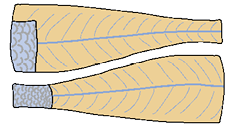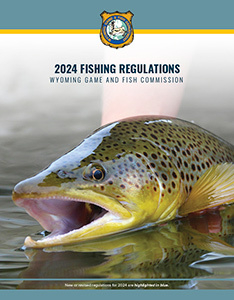Statewide Creel Limits
See Statewide Regulations for complete statewide regulations. There are many exceptions to statewide regulations on the Areas pages. Refer to How to Find Regulations for Specific Waters to learn to find regulations for specific waters.
Category |
Creel and Possession Limits |
Trout in combination (includes brown, cutthroat, grayling, golden, rainbow, salmon, tiger trout, and other trout hybrids). Excludes brook trout, lake trout and splake. |
All lakes, unless indicated otherwise: six (6) All streams, unless indicated otherwise: Three (3) No more than one (1) trout shall exceed sixteen (16) inches. TOTAL STREAMS AND LAKES COMBINED: six (6) |
Brook trout |
Sixteen (16) |
Lake trout and splake in combination |
Six (6) No more than one (1) lake trout or splake shall exceed twenty-four (24) inches. |
Burbot (ling) |
Three (3). See drainage area exceptions on pages 8, 13 and 16. |
Channel catfish |
Six (6) |
Largemouth and smallmouth bass in combination |
Six (6) |
Northern pike |
See drainage area exceptions. |
Sauger |
Two (2) |
Shovelnose sturgeon |
Two (2) |
Tiger muskie (sterile northern pike muskellunge hybrid) |
One (1), all tiger muskie less than thirty-six (36) inches in length shall be released to the water immediately. |
Walleye |
Six (6) |
Whitefish |
Six (6) |
Yellow perch, black bullhead, stonecat, crappie, rock bass, bluegill, pumpkinseed, green sunfish, green sunfish-bluegill hybrid, freshwater drum in combination |
Fifty (50) |
Except as otherwise provided, no person shall harvest and keep during any one (1) day, or have in possession, more than the number and length of game fish specified as the creel limits listed above. Exceptions are listed with the regulations for each drainage area on the Area pages.
Except as otherwise provided in the exception for an individual water, the total combined creel and possession limit for the trout category, regardless of the waters (streams, lakes, or a combination of both) a person is fishing, shall not exceed six (6) trout per day or in possession.
Any fish caught that is not to be counted in the creel limit shall be immediately released to the water with as little injury to the fish as possible. Any fish placed on a stringer, in a container, in a live well, or not released immediately to the water, shall be considered to be reduced to possession of the angler and shall be killed prior to being transported from the water of origin. No fish that has been reduced to possession of the angler shall be released alive without prior written approval from the Department.
All fish possessed or transported shall be kept in a manner that species and numbers can be determined. When length limits apply, the whole body shall remain intact (gills and entrails can be removed) while in transit or in the field. Where length limits do not apply, a piece of skin large enough to allow species identification (at least one (1) inch square) shall remain on all fish fillets while or in the field, except as otherwise provided in Areas 2, 3 and 5 for walleye and sauger harvested in the Wind River, Bighorn River and Tongue River drainages and Glendo Reservoir and in Area 4 for lake trout harvested in Flaming Gorge Reservoir.

There are no creel or possession limits on nongame fish. Nongame fish may be taken by the use of legal fishing methods during any season open for the taking of game fish.

